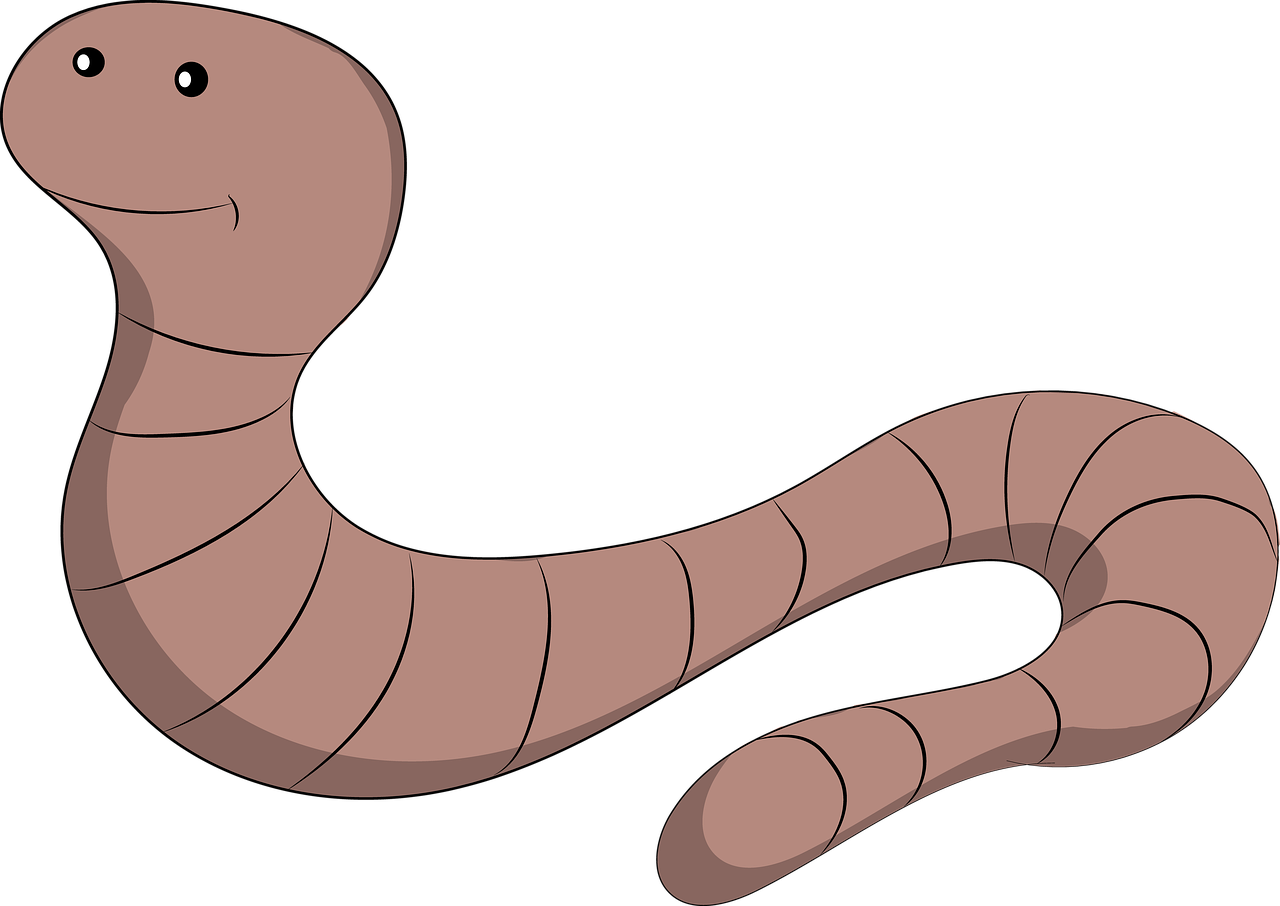Table of Contents
How do worms reproduce?
Worm Life Cycle
Stage 1: Cocoons to hatchlings
Stage 2: Hatchlings to Juveniles
Stage 3: Juveniles to Adults
How often do worms reproduce?
1. Temperature
2. Moisture
3. Aeration
4. pH
5. Food
6. Pest control
5 worm killing mistakes to avoid
1. Letting habitat temperature rise
2. Not replenishing the bedding
3. Not increasing feed quantity
4. Feeding the wrong foods
5. Not monitoring the surroundings
FAQs
Can worms feel pain?
How long can worms go without eating?
Do worms regrow if cut in half?
Do worms have 5 hearts?
What do worms hate the most?
Do worms like sugar?
Can worms disappear on their own?
Why do worms hate salt?
Can worms eat rice?
Conclusion
According to a research report, worms, especially earthworms, contribute to 140 million tons of grain production directly. That's just earthworms in the wild. When you take into account the fact that they can help with vermicomposting at little to no cost, their importance rises exponentially.
Despite their contributions, we know very little about them. That's what we will change today. The post below will answer the question: how long do worms live? It also covers other crucial aspects of their lives, like the stages of the worm life cycle.

How do worms reproduce?
Before we highlight the life cycle, it's crucial to understand how they reproduce and how their population grows.
National Wildlife Federation states that earthworms are hermaphrodites, that means, they have male and female reproductive organs. Usually, they reproduce by jutting out their front part from the soil and waiting for another worm to face in the opposite direction and come nearby. That's when they join together and release mucus, which forms an enclosed tube that contains cocoons.
According to Marlborough District Council, earthworms can mate as frequently as every 10 days, and the process usually lasts 24 hours. Now that you are aware of how cocoons are formed, it's time to answer the question, what is the life cycle of a worm to understand more.

The 3 Stages of the Worm Life Cycle
The life cycle begins with the Cocoon stage. Overall there are 3 worm life cycle stages which are as follows:
Stage 1: Cocoons to hatchlings
Cocoons look similar to lemons. However, their shape can vary since they are formed by mucus, which solidifies at a later stage. The hatching of cocoons is dependent on a lot of factors:
- Temperature is crucial for cocoon hatching. According to a study, temperatures between 10°C and 25°C are most conducive to successful cocoon hatching.
- While the type of soil doesn't significantly impact production, the moisture content does. A research report concluded that the hatching rate and production rate were highest when the soil moisture content was 35%.
- Lastly, the presence of red mites can damage most cocoons as they drain the fluids from cocoons, which means the hatchlings won't survive.
If the conditions are proper, the cocoons hatch in 2 to 3 weeks. Theoretically, hatching of 1 cocoon can result in 20 earthworms, but that's not the average. According to a study, on average, more than 80% of the cocoons produced anywhere between 1 to 4 earthworms rather than 20.
Stage 2: Hatchlings to Juveniles
Once the Hatchlings come out, they look similar to earthworms but are smaller. Not only that, their color is paler than fully grown worms. However, as they consume food and grow, they resemble earthworms more closely. This life stage usually lasts for 2 weeks, after which earthworms become juveniles. However, a few noteworthy changes take place during this stage, which are:
- The skin of hatchlings grows thicker.
- Usually, if juveniles are well-fed and have access to ample food, their skin color darkens with each passing day.
- The skin darkening is also coupled with increasing length.
Must Read : The Ultimate Guide How to Keep Eathworms Alive Longer, Tips and Trick
Stage 3: Juveniles to Adults
Usually, the time it takes from the formation of a cocoon to the earthworm reaching the adult stage of its life is around 90 days. However, there are a few factors at play here:
- Species
- Moisture
- Temperature
- Access to food
Once the worm reaches the adult stage, it has fully developed sexual organs and is able to breed, which means it can again contribute to population growth. Once it starts breeding, the same cycle will repeat.
Worm life span can be as long as 5 years in many cases. Therefore, they produce numerous cocoons during their lifetime, allowing them to increase their population exponentially.
Checkout our new video just released to watch lifecycle of worms:
How often do worms reproduce?
Adult worms can reproduce every week. However, this mostly happens during the warmer months since the cocoons are safer during these months. There are a few other factors at play that determine the frequency of reproduction, which we will cover below.

Factors that impact worm reproduction
When worms are in their natural habitat, it's tough to control these factors, but you can certainly do so in your bin.
1. Temperature
Ideally, the temperature should be in the 60°F to 80°F range. Anything above that will reduce worm activity, and they are likely to remain embedded in their bedding, which means the reproductive activity will also be less. The higher temperature will also start impacting the humidity and moisture in the surrounding environment, which once again would result in less worm activity.
Therefore, temperature is the #1 factor that impacts reproduction.
2. Moisture
According to the USDA, worms are 75% water. Hence, they need moisture in the environment to maintain their body weight and water content. If you aren't aware, they consume water by absorbing moisture through their skin. This means that if the surrounding soil or organic matter isn't moist, they start losing water and body weight.
When worms are reducing body weight, they certainly won't prefer any activity that requires them to spend a lot of energy or resources, like reproduction. A study also concluded this, clearly stating that reproductive and other worm activities increased in the presence of adequate moisture in the surroundings.
3. Aeration
Apart from absorbing moisture through their skin, worms also breathe through their skin. That's the primary reason they surface after rain or when the organic matter surrounding them drowns in water. Excessive water hampers their breathing.
The point we are trying to make is that worms need well-aerated surroundings. If the organic matter in your bin is drowning in water, worms won't be able to breathe. Difficulty in breathing is likely to kill them, which will actually reduce the population.
Similarly, if the organic matter isn't drenched but dense, then too, they will find it difficult to breathe, which will certainly slow down reproductive activity. That's why proper aeration by either spreading the organic matter in the bin or tilling the soil in case of natural surroundings is important to aid the reproductive activity among worms.
4. pH
According to a report published by Cornell University, a pH value between 6 and 8 is perfect for worms to survive. If the value falls below that, the surroundings become too acidic for worms. The more the pH level falls, the more likely the earthworm population is to fall. Notice, we aren't talking about growth but rather the population actually going down, which certainly means reproduction isn't happening.
According to a Government of Wales report, acidic soil or the surrounding area threatens a growing earthworm population. That's why, from a vermicomposter’s point of view, it's important to keep a watch on the pH level to ensure the earthworm population keeps on growing.
Must Read : How Long Do Worms Live?
5. Food
For any species to reproduce and thrive, a consistent food supply is needed. The same is true for worms. According to Purdue University in their natural habitat, the constant growth of roots and plants and their decay provide worms with a consistent food supply. Similarly, animal manure is also a good food source for worms.
In a worm bin, it's crucial to replenish food before the earlier one runs out for this very reason. It will ensure that worms can focus on their basic activities like moving around, reproducing, etc, which certainly means faster population growth, which aids the production of vermicompost.
6. Pest control
Let's say all the above conditions are met, but predators and pests are infesting the worm’s surroundings.
Will the worm population grow?
Most likely not!
Even if the worms reproduce, the hatchlings and larvae are most likely to be killed by predators. That's why it's important to always be on the lookout for such predators. Below, we will cover 2 of the most common predators of worms.
Red mites:
Red mites attack worm cocoons and drain the liquid from them, which can prove fatal for the larvae. The best way to eliminate them is to expose the bin to sunlight for a short time. Another option is to use a watermelon rind as bait, attract them to the rind, and throw it away.

Ants:
Usually, ants don't directly harm the worms but rather steal their food supply, which impacts population growth. In certain rare cases, they do attack worms. Therefore, it's best to eliminate them if you notice them in your worm bin.
One of the easiest ways to do so is to sprinkle cinnamon in your worm bin. This will drive away the ants but will not impact the worms.
Once you take care of these few aspects, it's easy to aid the reproduction process of worms and maximize worm life expectancy.

5 worm killing mistakes to avoid
The answer to the question, how long do worms live for, especially in the worm bin, is also dependent on avoiding certain mistakes, which can prove fatal for them. The section below covers such mistakes.
1. Letting habitat temperature rise
Letting the temperatures rise is one such mistake. It can dry out the worms' skin, eliminate moisture from the surroundings, and even reduce worm activity, which decreases the chance of reproduction. The first two can even prove fatal for worms.
When so much can go wrong on the occurrence of this mistake, it's important to monitor the temperature and, if need be try out things like:
- Changing worm bin location to reduce temperature.
- Using a fan to keep the temperature down.
- Sprinkling water to ensure proper moisture content. Proper moisture content also reduces temperature.
2. Not replenishing the bedding
Worms feed on their bedding, which is also like their protective shell. Whenever they are stressed or the surrounding conditions aren't conducive, they take refuge in their bedding.
If you don't replenish their bedding periodically, it will take a toll on their well-being. Such an impact can impact their lifespan and reproductive frequency. That's why not replenishing their bedding is a mistake you should avoid.
3. Not increasing feed quantity
Let's add a pound of worms to your worm and feed them 1 pound of organic matter daily. The worms finish it off in a day, and you feed them daily. Everything is going fine.
But what if you stick to this schedule and don't increase the feed quantity?
Well, that's a mistake! According to Oregon State University, the population of worms can double approximately every 60 days. That means you need to increase the feed quantity accordingly. So, don't make the mistake of sticking to the same feed quantity if you want them to thrive and not starve to death eventually.
4. Feeding the wrong foods
Worms, just like any other creature, need proper nutrition. But how to achieve that?
Answer is to avoid the acidic foodstuffs and simply rotate among the options like:
- Raw cut fruits (Non-citrus)
- Vegetables
- Tea bags
- Crushed egg shells
Always keep anything salty, spicy, or heavily processed away from the worm bin. Worms don't like such foodstuffs, and they can impact the bin's pH level, causing even more problems.
5. Not monitoring the surroundings
Another mistake people make that can significantly alter the life cycle of worms is not monitoring the surroundings. Always be on the lookout for pests, and if you discover any, it's best to take corrective measures.
How does the lifecycle of a worm end?
There are a few common causes of worm deaths:
- The most common cause is skin dryness. This can happen in the worm bin or their natural surroundings. Since they consume water through their skin, dry skin means they will eventually die of thirst.
- Lack of air circulation in the bin or natural surroundings is another problem that causes them to suffocate and die.
- Too much or too little food is another reason for their death.
- Rapid temperature changes can also prove fatal to them.
- In many cases, predators can also kill or turn them into hosts, eventually killing them.
Once they are killed, they decompose quickly because they primarily consist of water.
Once their bodies start decomposing, they are recycled by other worms. Hence, there is no need to remove them.

Different Worm Life Cycles Explained
Not all worms follow the same life path! Let’s explore a few important varieties beyond the typical earthworm.
🪱 Earthworm Life Cycle
The classic earthworm life cycle includes cocoon → hatchling → juvenile → adult. They thrive in moist soil and are essential for composting, soil aeration, and nutrient recycling.
🐛 Tomato Worm Life Cycle (Tomato Hornworm)
The life cycle of a tomato hornworm differs dramatically — they’re not composting worms but garden pests.
Their stages:
- Eggs (laid on tomato leaves)
- Larvae (green caterpillar stage — the “tomato worm”)
- Pupa (burrow into soil)
- Adult moth (transforms into the hawk moth)
Knowing this helps gardeners identify and manage infestations early.
🧫 Guinea Worm Life Cycle
The guinea worm is a parasitic species that infects humans through contaminated water.
Its life cycle involves:
- Larvae in water
- Ingestion by small crustaceans
- Human infection and growth inside the body
- Emergence through skin
Including these examples adds biological depth, positioning this guide as a full resource for anyone studying worm life cycles.
Must Read : How Many Worms Do I Need For My Worm Bin?
How Long Do Earthworms Live?
On average, earthworms live between 2–6 years, depending on the species and environment.
| Worm Type | Average Lifespan | Breeding Frequency |
|---|---|---|
| Red Wigglers | 2–5 years | Every 7–10 days |
| Nightcrawlers | 3–6 years | Monthly |
| Compost Worms | 1–3 years | Continuous |
Ideal conditions — temperature (60–80°F), moisture, and food supply — help worms live longer and stay active in composting.
Why the Worm Life Cycle Matters for Soil & Compost
Understanding the worm life cycle is crucial for improving soil structure and compost quality.
As worms feed and reproduce:
- They break down organic waste into nutrient-rich castings.
- Their tunnels improve aeration and water retention.
- Each new generation accelerates vermicompost production naturally.
By managing moisture, food, and pH balance, you can sustain their reproduction rate — ensuring a thriving worm colony and fertile compost.

Fun Facts About Worms You Didn’t Know
- Worms have no eyes or ears, but they sense vibrations and light.
- A single worm can eat half its body weight daily.
- Earthworms breathe through their skin, not lungs.
- Worms can produce 100+ offspring a year.
- Salt kills worms instantly by draining their body moisture.
These fascinating traits make them not just composting heroes but nature’s quiet recyclers.
Conclusion
So now that you're aware of the worm life cycle, it would be easier for you to use them for vermicomposting. Using the guide above you can even aid their lifespan and reproductive process to ensure the worm population in your bin grows at an even faster pace.
Ready to get started with vermicomposting? Click here to buy the best purebred red wigglers!




1 comment
Norm
I see that you use oyster shells, but don’t mention pulverized egg shells. They’re basically the same chemical make-up right? I have an almost limitless supply of the egg shells
Leave a comment
All comments are moderated before being published.
This site is protected by hCaptcha and the hCaptcha Privacy Policy and Terms of Service apply.